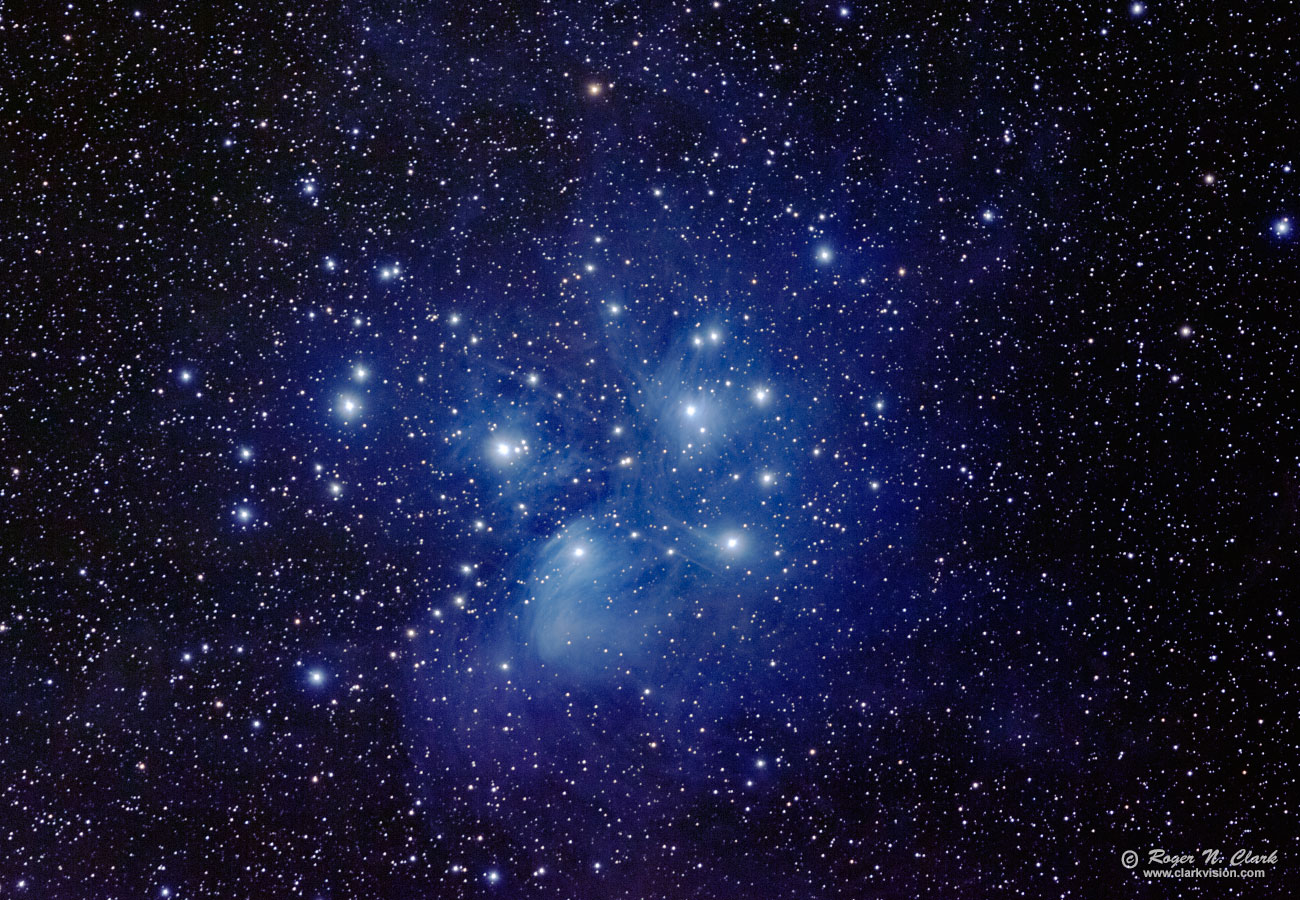| Home | Galleries | Articles | Reviews | Best Gear | New | About | Contact | Gallery Index | Previous |
Next |

| Home | Galleries | Articles | Reviews | Best Gear | New | About | Contact | Gallery Index | Previous |
Next |

The Pleiades star cluster, also known as the Seven Sisters is immersed in nebulosity due to scattered starlight.
Technical. Canon 7D Mark II 20 megapixel digital camera and 300 mm f/2.8 L IS II lens at f/2.8. 26 one-minute exposures at ISO 1600 were added (26 minutes total exposure). No dark frame subtraction, no flat fields, no noise reduction. Tracking with an astrotrac. Slight crop.
Modern DSLRs like the 7D Mark II include on sensor dark current suppression and low fixed pattern noise at ISOs around 1600 and higher, making no need for dark frame subtraction. Modern raw converters correct for light fall-off and also correct for hot/dead/stuck pixels. This makes processing low light images easy: simply align and average. Compare this image to the M45 made with a 7D Mark 1 with almost the same exposure time and almost the same sky conditions.
The Exposure Factors, CEF, CEFA are measures of the relative amounts of light received from a subject. It can be used to fairly compare wildly different lens/telescope apertures and exposure times. For this image:
The surface brightness of the Pleiades nebulosity is very low (see surface brightness of the nebulae in M45 ).
To learn how to obtain stunning images like this, please visit my Extensive Articles on Photography .
See my review of the Canon 7D Mark II and why it is so good for astrophotography: Canon 7D Mark II sensor analysis.
Keywords to this image = astrophoto-1 star_cluster nebula Messier night low-light digital_astro canon_7d2
Image ID: pleiades.m45.rnclark.c11.21.2014.0J6A1575-629-sigav26.e-bin3x3-c1.jpg
| Home | Galleries | Articles | Reviews | Best Gear | Science | New | About | Contact |
Last updated November 03, 2025